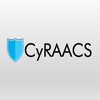In today's digital landscape, applications are the backbone of countless businesses. They store sensitive data, power critical operations, and connect us to essential services. Yet, even the most sophisticated applications can harbor vulnerabilities – weaknesses that malicious actors can exploit to steal data, disrupt operations, or compromise systems. This is where application security testing (AST) comes in.
What is Application Security Testing (AST)?
AST is a broad term encompassing various methodologies designed to identify and eliminate security weaknesses in software applications. By proactively searching for vulnerabilities, AST helps organizations build stronger defenses against cyberattacks and mitigate potential security risks.
Why is AST Important?
There are several compelling reasons to integrate AST into your software development lifecycle (SDLC):
- Rising Cybercrime: The threat landscape is constantly evolving, with cybercriminals developing new techniques to exploit vulnerabilities. AST helps stay ahead of the curve by proactively identifying and patching weaknesses before attackers can leverage them.
Data Security: Applications often handle sensitive user data, such as financial information or personal details. AST helps ensure this data is protected from unauthorized access, theft, or manipulation.
Compliance Requirements: Many industries have regulations mandating specific security controls for applications handling sensitive data. AST helps organizations demonstrate compliance with these regulations.
Reduced Costs: A data breach or security incident can be incredibly expensive, resulting in lost revenue, reputational damage, and regulatory fines. AST acts as a preventative measure, potentially saving organizations significant costs down the road.
Types of Application Security Testing
There are several different types of AST, each with its own strengths and weaknesses. Here's a breakdown of some of the most common approaches:
- Static Application Security Testing (SAST): SAST analyzes the source code of an application to identify potential vulnerabilities. It doesn't require a running application and can be integrated early in the SDLC. However, SAST may generate false positives and can't detect runtime vulnerabilities.
Dynamic Application Security Testing (DAST): DAST simulates real-world attacks on a running application to identify vulnerabilities. It can detect runtime issues that SAST might miss but requires a functional application and may not achieve full code coverage.
Interactive Application Security Testing (IAST): IAST combines elements of SAST and DAST. It analyzes application code and behavior during runtime, providing a more comprehensive view of potential vulnerabilities. However, IAST tools can be complex to set up and manage.
Software Composition Analysis (SCA): SCA focuses on identifying vulnerabilities within third-party libraries and open-source components used in an application. With the growing prevalence of open-source software, SCA plays a crucial role in managing potential security risks.
Penetration Testing (Pen Testing): Pen testing involves simulating a real-world attacker's attempt to exploit vulnerabilities in an application. This approach provides a thorough assessment of an application's security posture but can be time-consuming and expensive.
AST Best Practices
To maximize the effectiveness of your AST efforts, consider these best practices:
Integrate AST Early and Often: Shifting security "left" in the SDLC allows for earlier detection and remediation of vulnerabilities. Integrate AST tools throughout the development process, from code reviews to pre-deployment testing.
Use a Combination of Techniques: No single AST approach is foolproof. Utilize a combination of SAST, DAST, and other methods to achieve comprehensive coverage and identify a wider range of vulnerabilities.
Prioritize Remediation: Following any AST assessment, prioritize vulnerabilities based on severity and exploitability. Address critical vulnerabilities first and develop a plan to remediate all identified issues.
Automate Whenever Possible: Many AST tools can be automated, allowing for faster and more efficient testing. Automation helps integrate AST seamlessly into your development pipeline.
Build a Security Culture: Security is not just the responsibility of developers or security professionals. Foster a culture of security within your organization, where everyone is aware of security best practices and plays a role in protecting applications.
Conclusion
AST is an essential component of any robust application security strategy. By proactively identifying and addressing vulnerabilities, organizations can build stronger, more secure applications that are less susceptible to cyberattacks. By following the best practices outlined above, you can leverage AST to enhance your application security posture and safeguard your valuable data and systems.
At CyRAACS™, our expertise lies in offering tailored application security testing solutions, empowering organizations to strengthen their defenses and outmaneuver cyber threats. Safeguard your applications effectively – prioritize security testing now! Reach out to us at www.cyraacs.com to get started today.


No comments yet